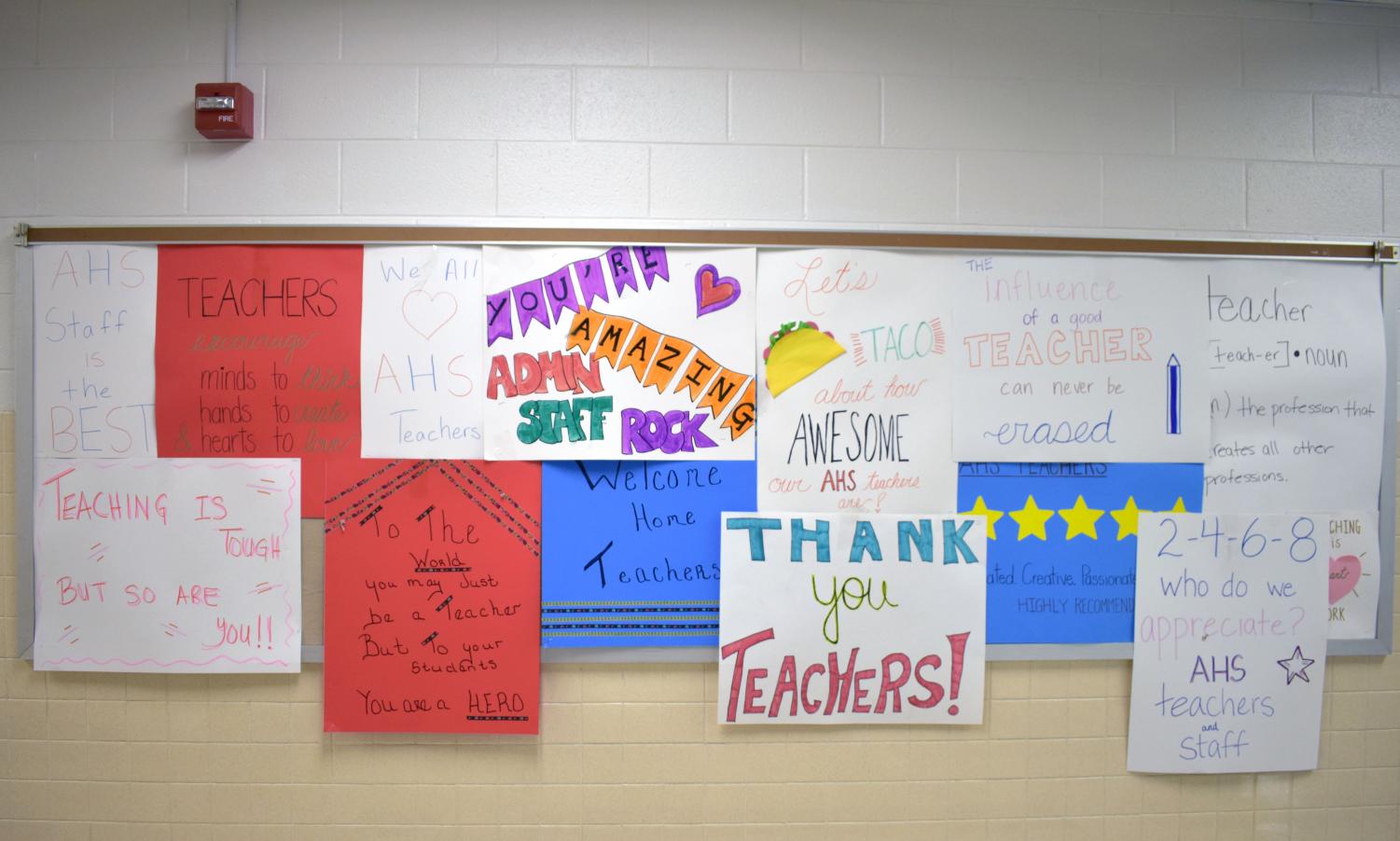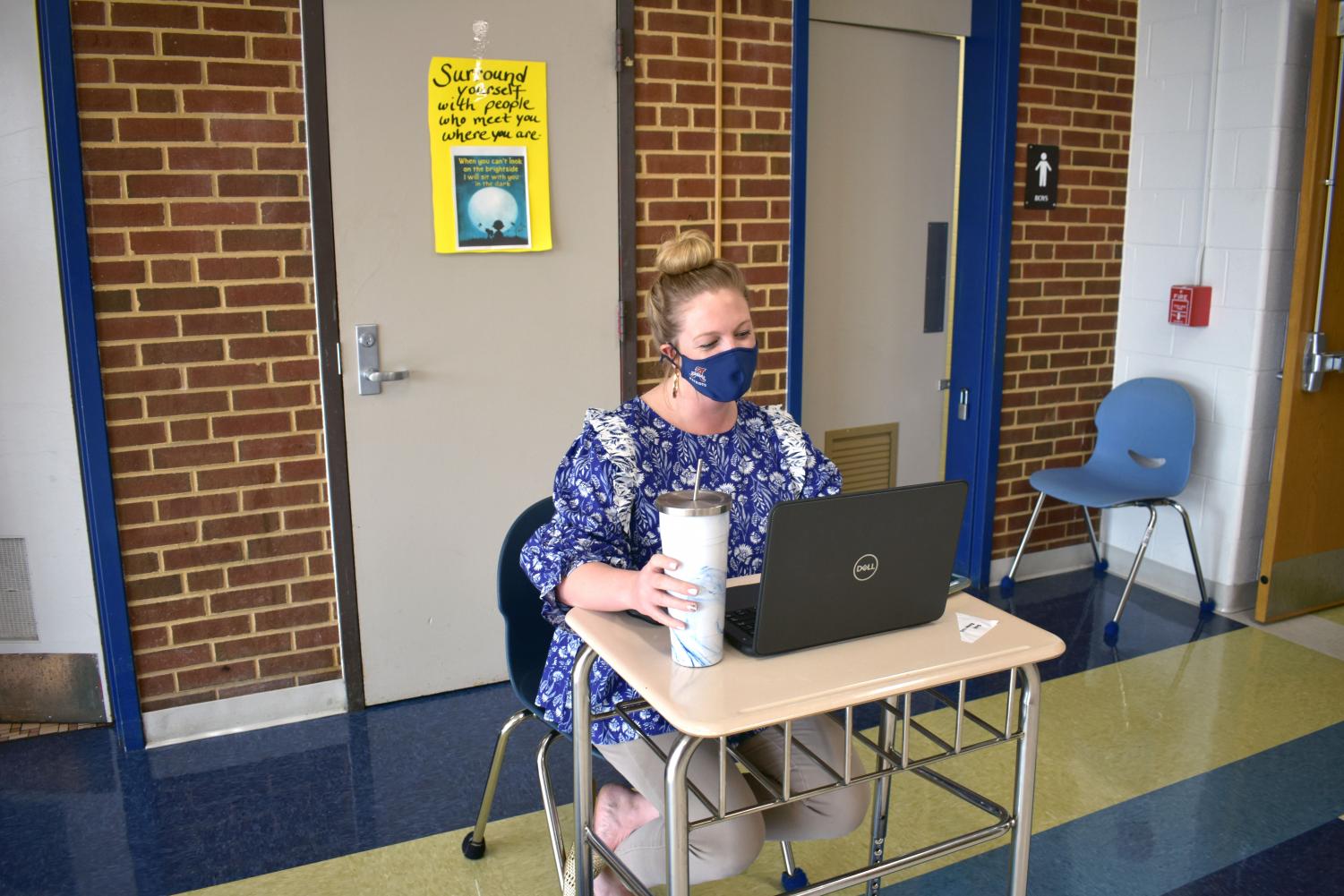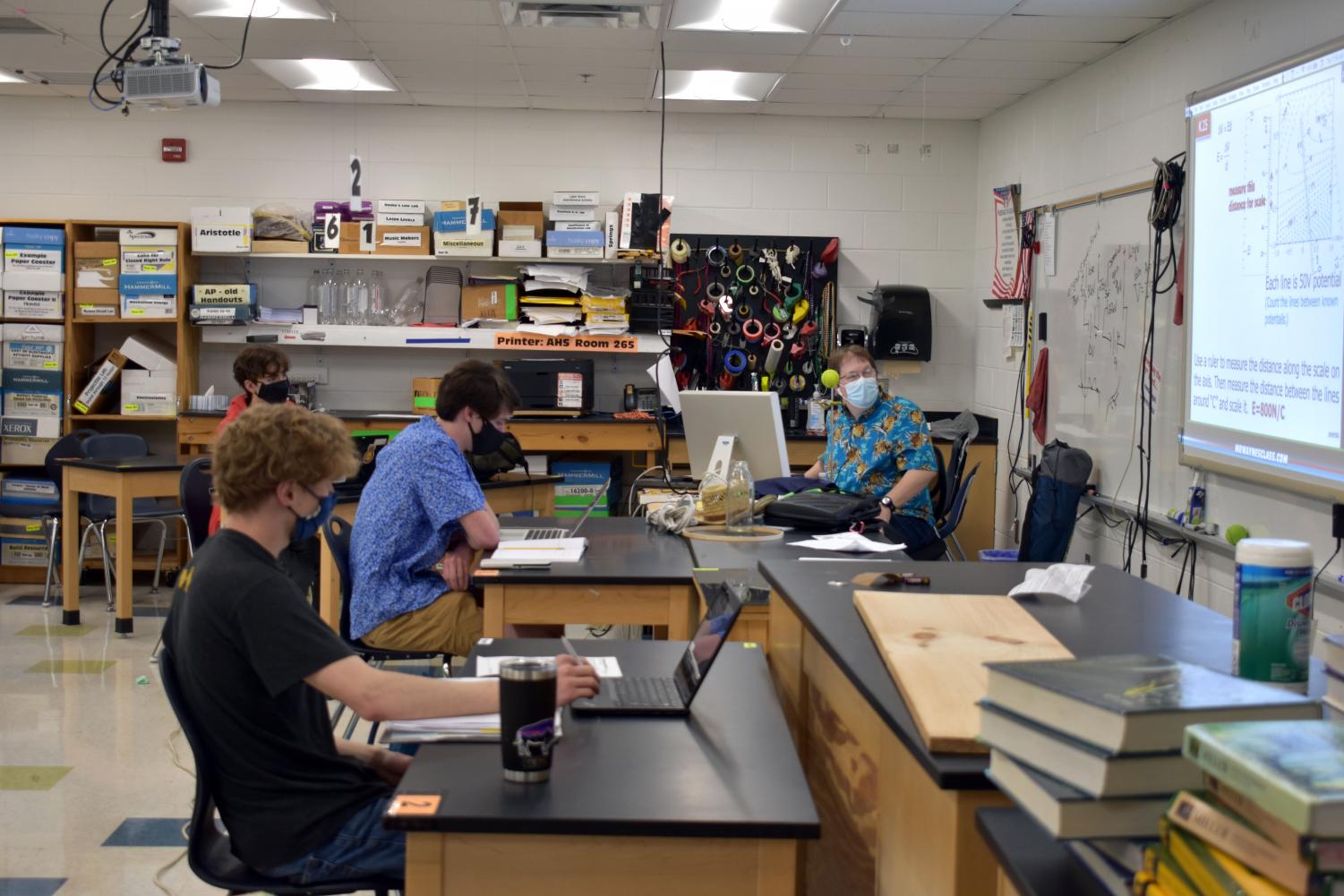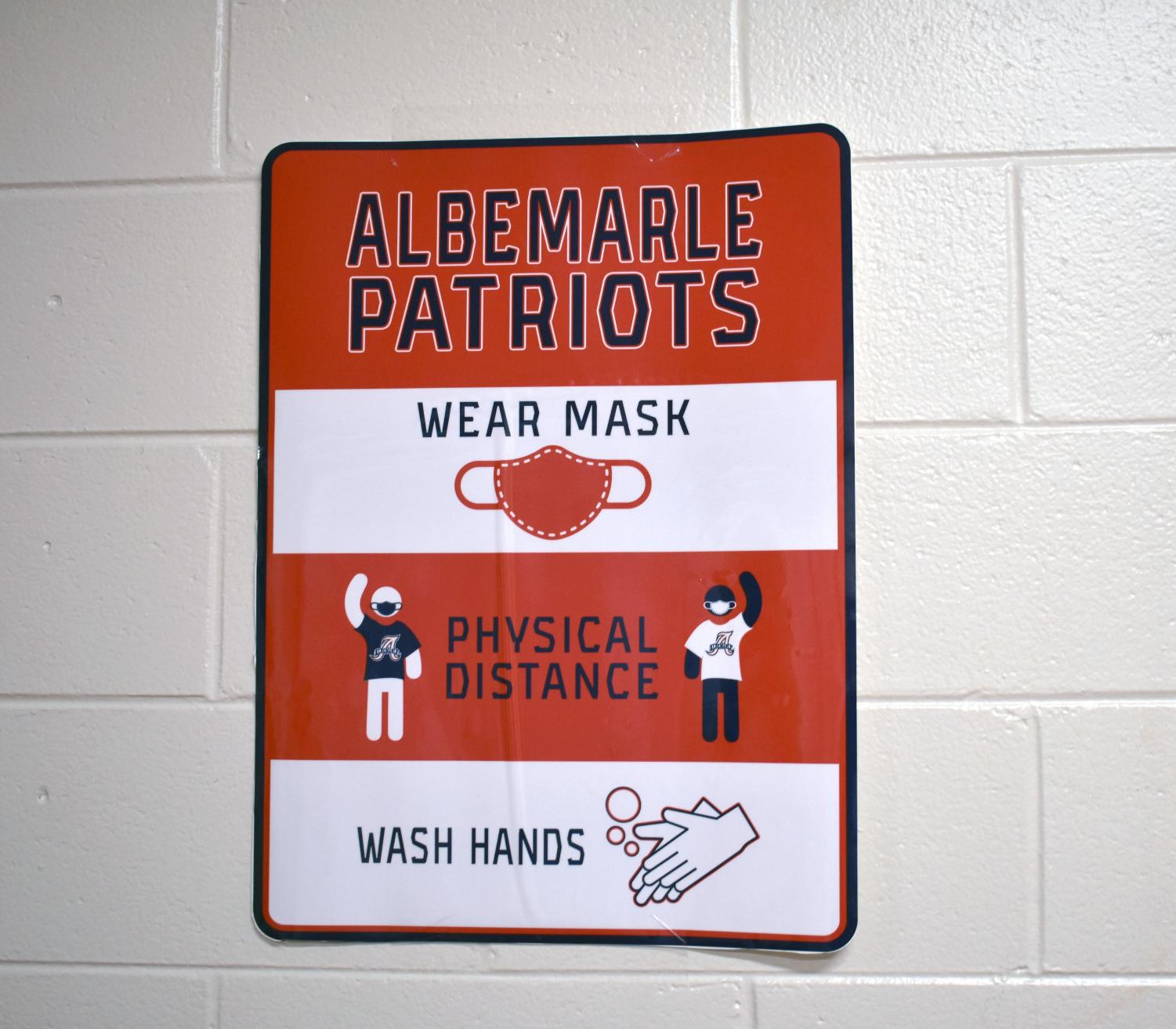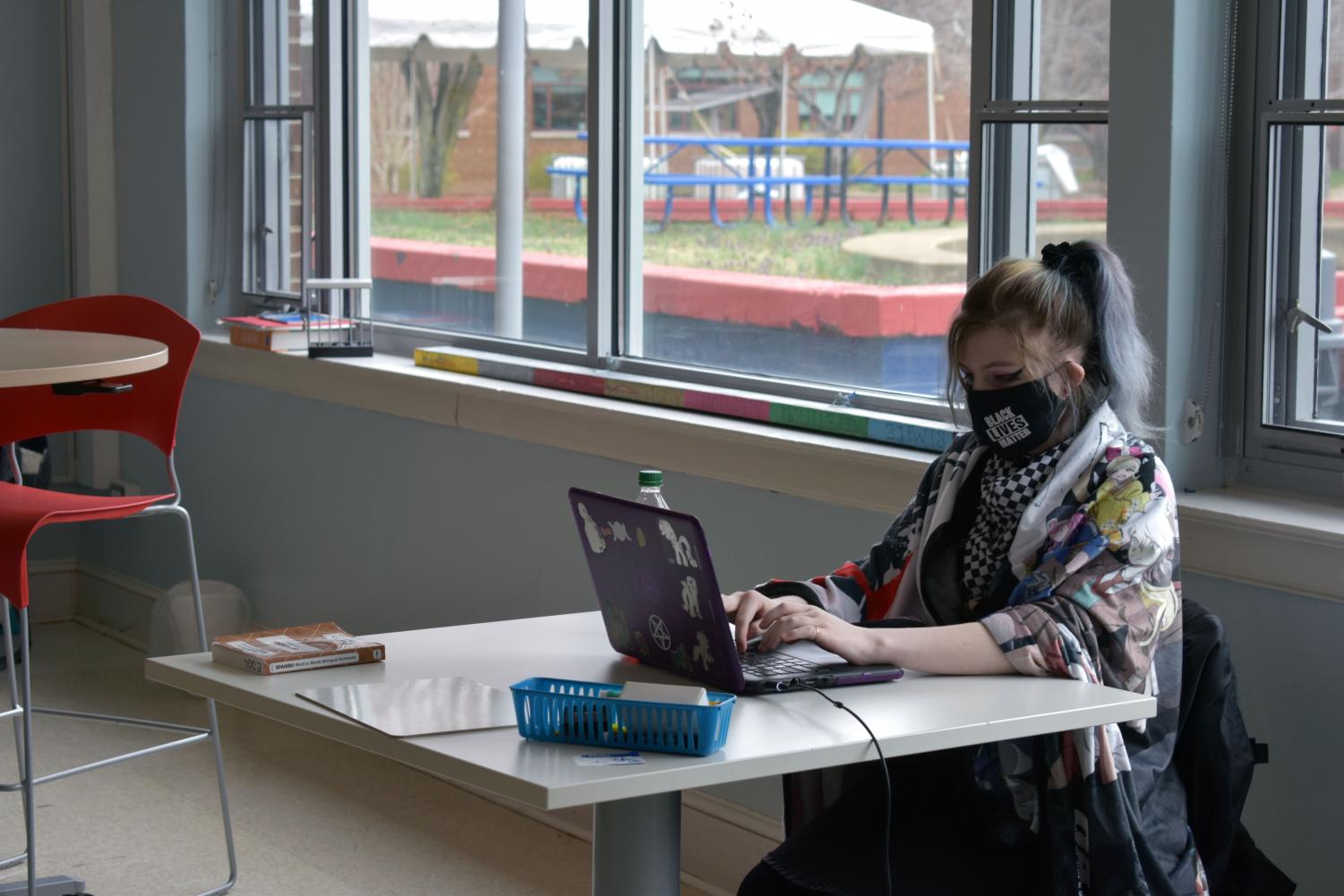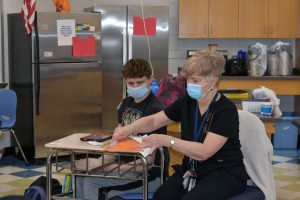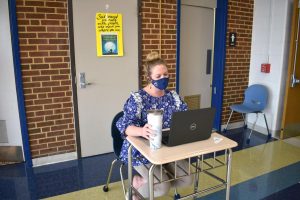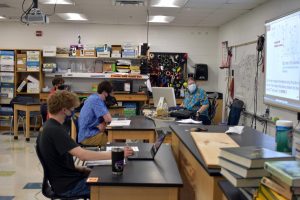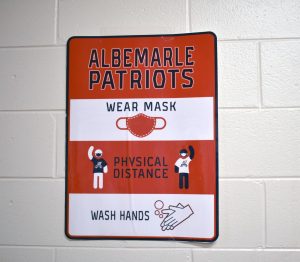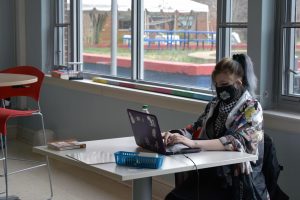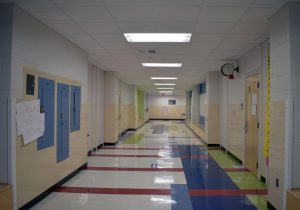Bridging the Gap
Students Say Hybrid Learning Rebuilds Sense of Community
April 20, 2021
After schools abruptly shut down in March of 2020, we are slowly starting to see the buds of new growth peeking through as more students and staff return to the building.
In a typical year, students would have long settled into the routine by now. But this is no typical year.
With over 800 students now going in on their two assigned days of learning in a physical classroom, most of them for the first time this school year, it has been a good reminder that the people we’ve seen on the other side of the screen are just that– people.
“It is so much more humanizing to see my teachers and classmates in person and to have the opportunity to speak with them whenever I want to,” hybrid sophomore Elmira Rahmani Mofrad said. “I can ask questions much easier, whether it be with my teacher or my peers.”
Teachers seem to have a similar perspective.
“Seeing students has been fantastic,” math teacher Bill Daly said. “Teachers get a lot of visual clues about how instruction is going when we are able to actually see students—it helps us to adjust instruction as needed, speed up, slow down, etc.
“It has also been great for students because it is so much easier to ask a question and to get a little help in person than in virtual. I feel like students might spend a lot longer trying to figure out where they’re struggling when they’re virtual or to even just give up on something. But when they’re in the room I can easily help them with any obstacles they encounter,” Daly said.
However, even with improvements for the students going into the building, there still remains the issue of splitting teachers’ attention between focusing on the kids in the classroom and the ones joining via Zoom.
“My teachers have done an amazing job of addressing both in-person and virtual students,” virtual-only sophomore Zaina Nilamdeen said. “I think they’ve gone out of their way to make sure that in-person and virtual students are acknowledged, so I haven’t really been in the situation where one group is being neglected. This really helped the transition to Stage Four occur so much smoother.”
It’s also hard on teachers when the technology they rely on to communicate with the other half of their students malfunctions.
“It can be stressful making sure all students feel seen and heard in the room and on Zoom,” history teacher Jessica Byrd said. “The biggest barrier and challenge to this is the technology. I feel lucky to have access to the technology I have at AHS, but also it can be frustrating when the technology is inconsistent.”
As students adjust to being in classrooms again, the two-day system increases in its charm.
“It’s nice to alternate between in-person and virtual school because, since we are not used to being in school every day anymore, we can get a break on those virtual days,” Rahmani Mofrad said. “This way I don’t get overwhelmed or burnt out.”
Students are able to switch out of hybrid classes and back to virtual if they wish. Switching from virtual to hybrid can be a bit trickier, though, as the social distancing seating capacity for classrooms must be taken into consideration. So far, about 45 students have changed from virtual to hybrid, according to guidance director Meghan Parsons.
“I didn’t choose hybrid when they first asked because I thought it was going to be hard to actually learn six feet apart and socialize with my peers,” freshman Kevin Deonarain said. “I changed my mind because my friends told me it was really easy and better than online, so I decided to try it out and, so far, I’m really liking it.”
After so long of being unable to return to a normal school year, it seems that students are even more grateful for any opportunity to see our fellow classmates and teachers once more.
“I plan on staying hybrid because I can already see a boost in my mental health,” Rahmani Mofrad said. “In school, I am able to have human interaction and a social life in a way that I would never be able to have on Zoom. I am no longer isolated behind a computer screen staring at black screens. Once again, I feel a part of a community, and that is a feeling I took for granted.”



